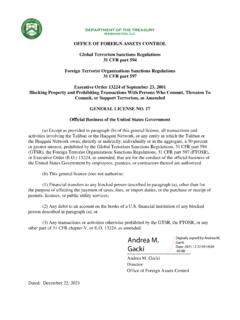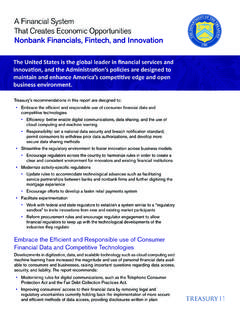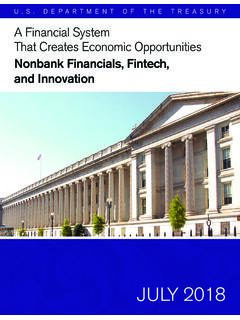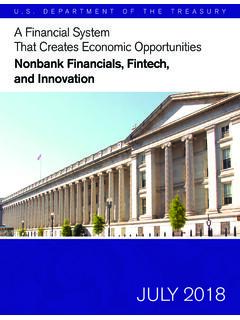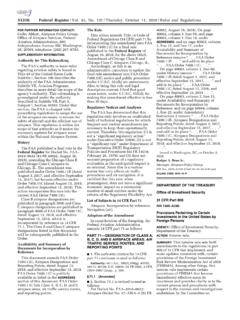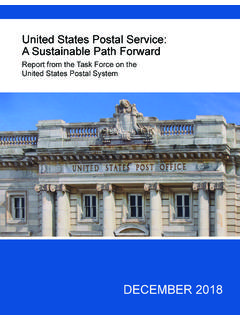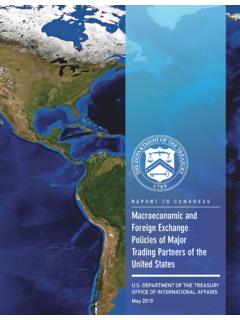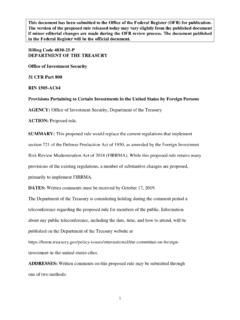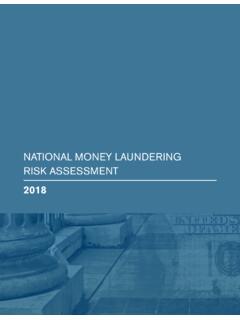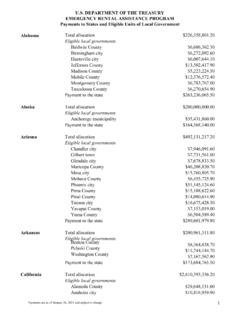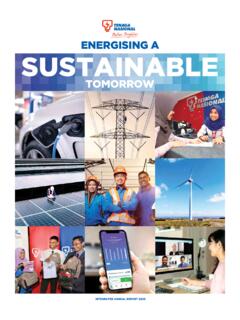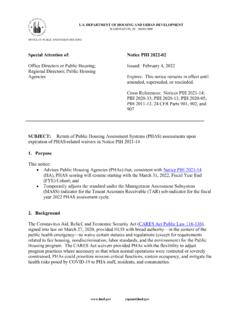Transcription of AN INTRODUCTION TO THE Coronavirus State and Local …
1 AN INTRODUCTION TO THEC oronavirus State and LocalFiscal Recovery FundsCompliance and Reporting GuidanceFor metropolitan cities and counties with a population less than 250,000 which received less than $5 million in SLFRF fundingJune 20212 Webinar OverviewThe content of this webinar specifically covers the compliance and reporting requirements of the State and Local Fiscal Recovery Funds program for:Metropolitan cities and counties with a population less than 250,000 which received less than $5 million in SLFRF funding. If you do not fall into this category of recipient, other webinar sessions are scheduled this week specifically addressing your session provides an INTRODUCTION toyour compliance and reporting responsibilities as discussed in the SLFRP Compliance and Reporting Guidance. You can find this document at session will notcover the State and Local Fiscal Recovery Fund Interim Final Rule or permitted uses under the Interim Final Rule.
2 3 SLFRF Webinar ScheduleStates and TerritoriesTuesday, June 22 at 1:30 2:30 ETMetropolitan cities and counties with a population that exceeds 250,000 residentsThursday, June 24 at 1:30 2:30 ETMetropolitan cities and counties with a population below 250,000 residents which received more than $5 million in SLFRF fundingThursday, June 24 at 12:00 1:00 ETFriday, June 25 at 1:30-2:30 ETMetropolitan cities and counties with a population below 250,000 residents which received less than $5 million in SLFRF fundingTuesday, June 22 at 11:30 12:30 pmWednesday, June 23 at 1:30 12:30 ETTribes / Tribal AssociationsMonday, June 28 at 3:00 4:00 ETPlease refer to the chat for the registration links4 Agenda Overview Part 1: general Guidance Part 2: Reporting Guidance Q&AThis session provides an INTRODUCTION toyour compliance and reporting responsibilities as discussed in the SLFRP Compliance and Reporting Guidance.
3 You can find this document at ResourcesFor More Information: Please visit Treasury s State & Local website at Request Funding: Please visit Media Inquiries: Please contact the Treasury Press Office at (202) 622-2960 For general Inquiries:Please email American Rescue Plan Act of 2021 The American Rescue Plan Act (ARPA) is providing fast and direct economic assistance for American workers, families, small businesses, and industries and it: Continues programs started by the CARES Act in 2020 and consolidated Appropriations Act in 2021. Adds new phases, allocations, and guidance to address issues related to the continuation of the COVID-19 pandemic. Creates new programs to address continuing pandemic-related crises, and fund recovery efforts as the United States begins to emerge from the COVID-19 pandemic. Was passed by Congress on March 10, 2021, and signed into law on March 11, State and Local Fiscal Recovery Funds OverviewARPA created the Coronavirus State and Local Fiscal Recovery Funds (SLFRF) program to deliver $350 billion for State , territories, municipalities, counties, and Tribal governments much needed key objectives for SLFRF are to: Support the urgent COVID-19 response efforts to continue to decrease spread of the virus and bring the pandemic under control.
4 Replace lost revenue for eligible recipients to strengthen support for vital public services and help retain jobs. Support immediate economic stabilization for households and businesses. Address systemic public health and economic challenges that have contributed to the inequal impact of the pandemic on certain Final Rule SLFRF is subject to the requirements and guidance specified in the Interim Final Rule, adopted on May 10, 2021. The Interim Final Rule: Establishes a framework for determining the types of programs and services eligible under ARPA. Builds on the use of eligible expenditures under the Coronavirus relief Fund (CRF). Recognizes the broad range of eligible uses to help SLFRF recipients. Establishes certain regular reporting requirements, including requiring certain recipients to publish information regarding use of SLFRF is seeking comments on all aspects of the Interim Final Rule.
5 Comments are due July 16, 2021 and can be electronically submitted through the Federal eRulemaking Portal or via mail to the Treasury. 10 Compliance and Reporting Guidance Overview On Jun 17, 2021, Treasury released the SLFRF Compliance and Reporting Guidance, which builds on the Interim Final SLFRF recipients are required to meet the compliance and reporting responsibilities noted in the Interim Final Rule. The Reporting Guidance is broken into two parts: (1) general Guidance (2) Reporting Requirements11 Purpose of the Reporting GuidanceThe SLFRF Reporting Guidance will ensure a speedy, equitable, transparent, and accountable recovery for all AmericansAccountable:Ensure recipients fulfill their compliance responsibilities and use funding as intendedTransparent:Provide the public data on how these funds were used and the outcomes achievedUser Friendly: Provide as easy and efficient user experience as possiblePart 1: general Guidance 13 Recipient Compliance Overview Part 1B: Statutory Eligible Uses Part 1C: Treasury s Interim Final Rule Part 1D: Uniform Guidance (2 CFR) Requirements Part 1D: Award Terms & Conditions14 Parts 1B and 1C: Statutory Eligible Uses and Treasury s RulemakingPart : Eligible and Restricted Uses SLFRF has four permitted uses and certain restricted uses Part.
6 Eligible Cost Timeframe Eligible costs incurred between March 3, 2021and December 31, 2024 Funds obligated by December 31, 2024and expended by December 31, 2026 Part :Reporting Requirements Generally, initial interim report, quarterly or annual Project and Expenditure reports, and Recovery Plan15 Parts 1D and 1E: Uniform Administrative Requirements and Award Terms and ConditionsSLFRF recipients must follow the Uniform Administrative Requirement, Cost Principles, and Audit Requirements for Federal Awards (2 CFR Part 200) and the Terms and Conditions of the SLFRF assistance. Allowable Activities Allowable Costs/Cost Principles (such as administrative costs and salaries and expenses) Cash Management Eligibility Subrecipient Monitoring Requirements Recordkeeping Requirements Single Audit Requirements Civil Rights CompliancePart 2: Reporting Guidance17 Reporting RequirementsMetropolitan city or county with a population below 250,000 residents and receiving less than $5 million in funding submits:1.
7 Interim Report2. Project and Expenditure ReportContents Initial overview of status and uses of funding Types of projects funded Financial data Information on contracts, grants, and subawards over $50,000 Frequency & Submission Date One-time By August 31, 2021 Covers date of award through July 31, 2021 Annually By October 31, 2021 and then annually thereafter Covers date of award through September 30, 202118 Key Concept: Expenditure CategoryAn Expenditure Category (EC) is a coding system to track how funding is used, andwill also be used to identify where additional programmatic data is 1 includes a list of 66 Expenditure Categories. 19 Key Concepts: ProjectsProjects: Closely related activities toward a common purpose/goal New or existing services or investments Funded in whole or in part by SLFRF funding Each project must align to one Expenditure Category. Projects break down an Expenditure Category into more detail.
8 Recipients have flexibility to define their projects but must provide a sufficient level of detail to be able to report on specific activities for each project, including any required program Concepts: RelationshipsExpenditure Category ( , Education Assistance: Early Learning) Project AProject B ( services)Obligations/ExpendituresSubawar d ( , Contract)Subaward ( , Grant)21 Part 2A: Interim Report Initial overview of status and funding (covering spending from March 3 to July 31, 2021) and is due August 31, 2021. One-time report to provide obligations and expenditures by Expenditure Category at the summary level. Required Programmatic Data includes:IDCategoryCumulative Obligations to DateCumulative Expenditures to Date1 Public Vaccination$1,000,000$800, Testing$1,800,000$1,100, Contact in Congregate Settings$3,498,000 Revenue Replacement Revenue replacement formula and other revenue calculation details and exclusions If available, use audited data Description of services provided22 Part 2B: Project and Expenditure ReportProject and Expenditure Reports include projects and contracts, grants, and subawards over $50, report is due on October 31, 2021, and annually and ExpendituresSubawardsProgram data Project Inventory Expenditures Project Status Project Demographic Distribution Civil Rights Compliance Subawards Required Programmatic Data Required Programmatic Data (for infrastructure)23 Part 2B.
9 Project and Expenditure Report-Project Demographic DistributionIdentify whether or notthe project is serving an economically disadvantaged community, based if program or service is: Provided at a physical location in a Qualified Census Tract (QCT) Primary intended beneficiaries live within a QCT Eligibility criteria are such that the primary intended beneficiaries earn less than 60 percent of the median income; or Eligibility criteria are such that over 25 percent of intended beneficiaries are below the federal poverty 2B: Project and Expenditure Report-Programmatic Data (Non-Infrastructure Projects)Provide specific programmatic data requirements for non-infrastructure projects for each Expenditure Category, including: Payroll for Public Health and Safety Employees Household Assistance Small Business Economic Assistance Aid to Travel, Tourism, and Hospitality or Other Impacted Industries Rehiring Public Sector Staff Education Assistance Premium Pay Revenue Replacement25 Part 2B: Project and Expenditure Report-Programmatic Data (Infrastructure Projects) Infrastructure projects must report detailed project level information, location, and expenditure data All Water, Sewer, and Broadband infrastructure projects over $10m must also report.
10 Number of employees/contractors Number of direct or third partyhires Wages/benefits by worker classification Whether wages are at prevailing pageRecipients must also report: Detailed information on the wages and benefits provided, and how they will ensure a ready supply of skilled and unskilled labor, minimize the risk of labor disputes, and ensure a safe and healthy workplace. Some additional reporting requirements may be waived for recipients who can certify compliance with Davis-Bacon or certify they have entered into a Project Labor Submission Portal and Training Information submitted via Treasury Submission Portal. Detailed User Guide and reference materials will be provided Technical assistance webinars to support recipients reporting requirements. Further communications to be posted on Treasury s website. 27 Reporting RequirementsMetropolitan city or county with a population below 250,000 residents and receiving less than $5 million in funding submits:1.
